Introduction
As you embark on the journey of establishing your e-commerce business, it's crucial to have a clear strategy in place. This article provides expert advice on various aspects of building a successful retail website, from defining your business model to marketing your products and brand. With the rapid growth of e-commerce across emerging markets and the ever-evolving digital landscape, it's essential to adopt a forward-thinking and customer-centric approach.
From choosing the right domain name and e-commerce platform to designing an engaging website and creating compelling product listings, every step plays a vital role in attracting and converting customers. Additionally, setting up a secure payment gateway, testing your website thoroughly, and implementing an effective digital marketing strategy are key to driving sales and standing out in the competitive online marketplace. Get ready to dive into the world of e-commerce and discover how to create an optimized and successful retail website.
Define Your E-commerce Business Model
As you embark on the journey to establish your retail website, it's imperative to meticulously outline your e-commerce strategy. Delve into the intricacies of your product or service offerings, identify the core audience you intend to captivate, and articulate a compelling value proposition. By doing so, you'll create a storefront that not only aligns seamlessly with your entrepreneurial objectives but also resonates deeply with your consumer base. Keep in mind, the core of e-commerce is the smooth transaction of goods and services via the internet, covering various forms like shopping on the web, downloads, and more. Your web layout should reflect the ease and availability that customers have come to anticipate from electronic trade. With the online environment constantly changing, as witnessed in the fast e-commerce expansion in developing economies—an affirmation of the creative, mobile-focused solutions customized to local requirements—it's evident that a future-oriented, customer-focused strategy to your business model and web design is crucial.
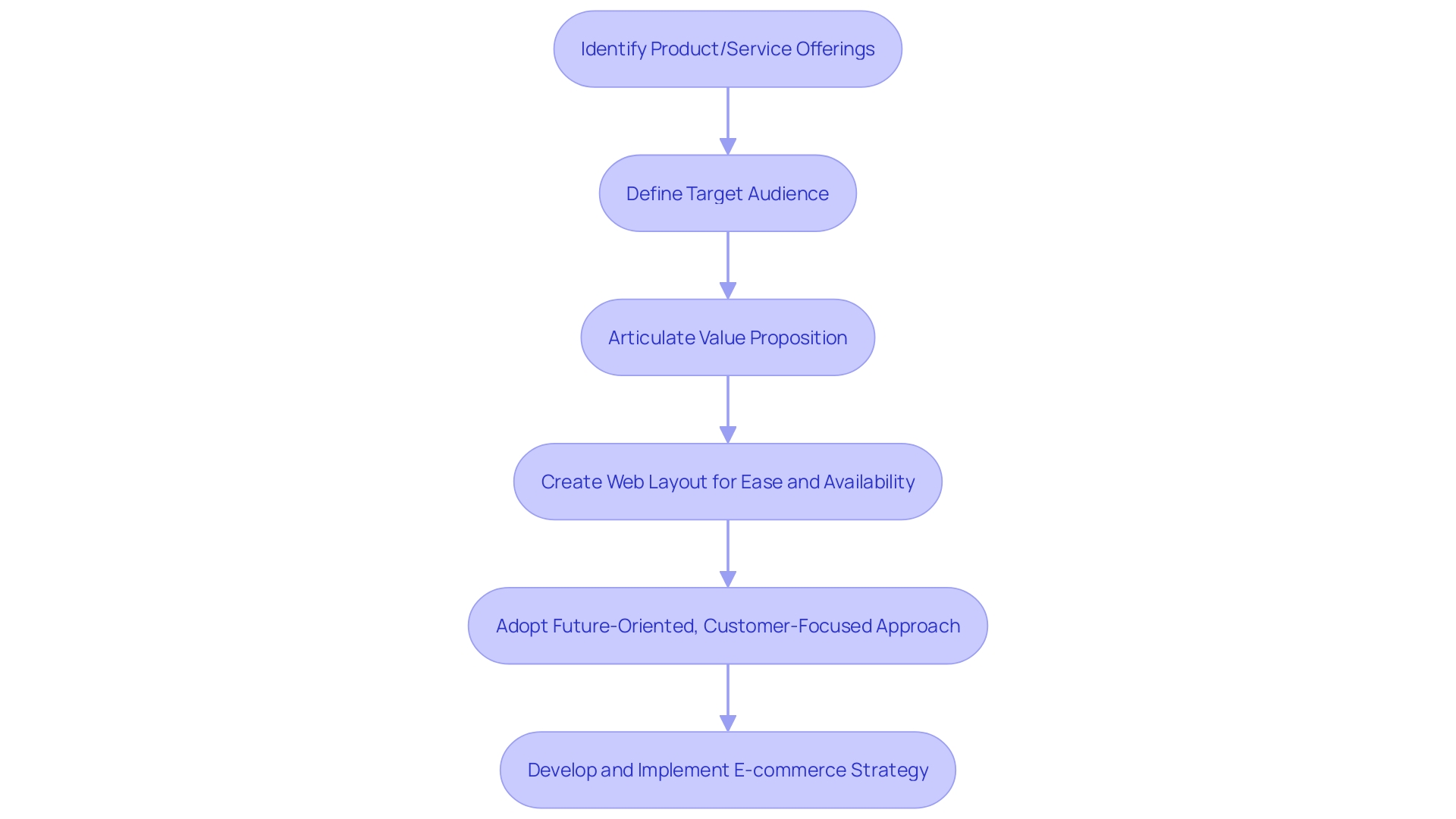
Choose a Domain Name
Selecting the right domain name is a crucial step in building an effective online presence for your retail website. It's the digital front door to your business, so it's important to make it memorable and reflective of your brand. While hyphens have traditionally been viewed as a negative for domain names, they can improve clarity in certain cases. If your business name or keywords naturally contain hyphens, embracing them could prevent confusion amongst clients and ensure your domain name is understood correctly. Furthermore, integrating pertinent keywords into your domain can enhance your SEO endeavors, aiding potential clients in locating your products or services more effortlessly. However, simplicity is key; a straightforward, hyphen-free domain often holds greater value in Google's eyes. Remember, your domain name is more than just an address—it's a strategic asset. Protect it with a trademark and a comprehensive domain strategy to guard against infringement and to maintain the integrity of your brand.

Select an E-commerce Platform
The digital landscape is continually evolving, and with it, the way consumers interact with online retail spaces. Choosing the ideal e-commerce platform is more than just a matter of preference; it's about harnessing the power of data science to enhance the user experience (UX) and drive business growth. By utilizing the extensive data that individuals generate across multiple touch-points—from initial ad clicks to final product reviews—retailers can gain invaluable insights into consumer behavior, preferences, and the effectiveness of various marketing channels.
When assessing e-commerce platforms like Shopify, WooCommerce, or Bigcommerce, it's important to take into account not only the fundamental features like user-friendliness, customization choices, payment gateways, and inventory management tools but also the platforms' ability to integrate and analyze data from clients. For instance, Shopify, recognized by Gartner for its robust capabilities, has powered over half a trillion dollars in global commerce, highlighting the importance of speed, simplicity, and the ability to scale.
The selection process should be informed by a strategic assessment of your business's unique needs, the market demand, and the competitive landscape. By embracing platforms that facilitate a seamless buying experience—as illustrated by the recent launch of a checkout-free store in Dublin Airport, powered by Zippin technology—businesses can stay ahead in a market that values efficiency and innovation. Therefore, the right e-commerce platform is not just a tool for online transactions but a strategic asset that empowers retailers to tap into a goldmine of data and deliver an optimized shopping experience that resonates with their target audience.

Create an Account and Set Up Web Hosting
Choosing the appropriate web hosting service is like discovering a residence for your retail online store; it's where your online storefront will exist and how customers will access it. A web server, which operates around the clock, is essential to keep your site accessible globally, embodying a digital environment that fosters information sharing and interaction.
When establishing your internet presence, it is essential to select a hosting provider that matches the scale and objective of your site. For instance, a blog or small online store may require less robust hosting services compared to a larger e-commerce site with a vast product range. Miscalculating your needs can lead to unnecessary costs or the need to switch hosting plans prematurely.
The foundation of your site's performance lies in its hosting. A reputable web hosting provider offers more than just dependability and quickness, but also robust security features to safeguard your business and clientele. Improved performance of the site, such as quick loading times, is crucial for satisfaction of clients and can have a substantial effect on loyalty and confidence.
In the words of industry experts, finding a reputable hosting provider is vital for small businesses, as it lays the groundwork for their online operations. The proper hosting service guarantees the perpetual availability of your site, leading to a stable and seamless user experience—essential for attracting customers and handling transactions.
Keep in mind, your web hosting selection is a fundamental decision that will back your site's expansion, impact its functionality, and assist in maintaining its continuous connection with your audience.
Design Your Website
Building a retail online presence that stands out in today's crowded digital marketplace is essential. The site's design should not only be visually engaging with the right mix of colors, fonts, and imagery, but also intuitive to navigate. A primary focus is optimizing the site for mobile users, considering that over half of internet traffic comes from mobile devices. This optimization includes responsive design that adapts to various screen sizes, ensuring functionality and aesthetics are preserved across devices.
High-resolution product images paired with clear, compelling descriptions are critical in showcasing your offerings and can influence purchasing decisions. With research indicating that nearly two-thirds of consumers may leave a site if they can't find what they're looking for immediately, the importance of a well-organized and user-friendly design cannot be overstated. Additionally, loading times are a crucial factor; a mobile site that loads in two seconds or less is likely to see a 15% higher conversion rate than slower sites.
Staying ahead of the curve with modern design trends is also vital. As Nikki Gamble, Digital Marketing Manager, emphasizes the significance of consented use of cookies and data processing for a personalized user experience, it's clear that transparency and user trust are as important as the design elements.
Furthermore, successful retail experiences, such as the checkout-free store in Dublin Airport, demonstrate the innovative use of technology in enhancing customer convenience. Incorporating such functionalities into your online platform can significantly impact user engagement and sales.
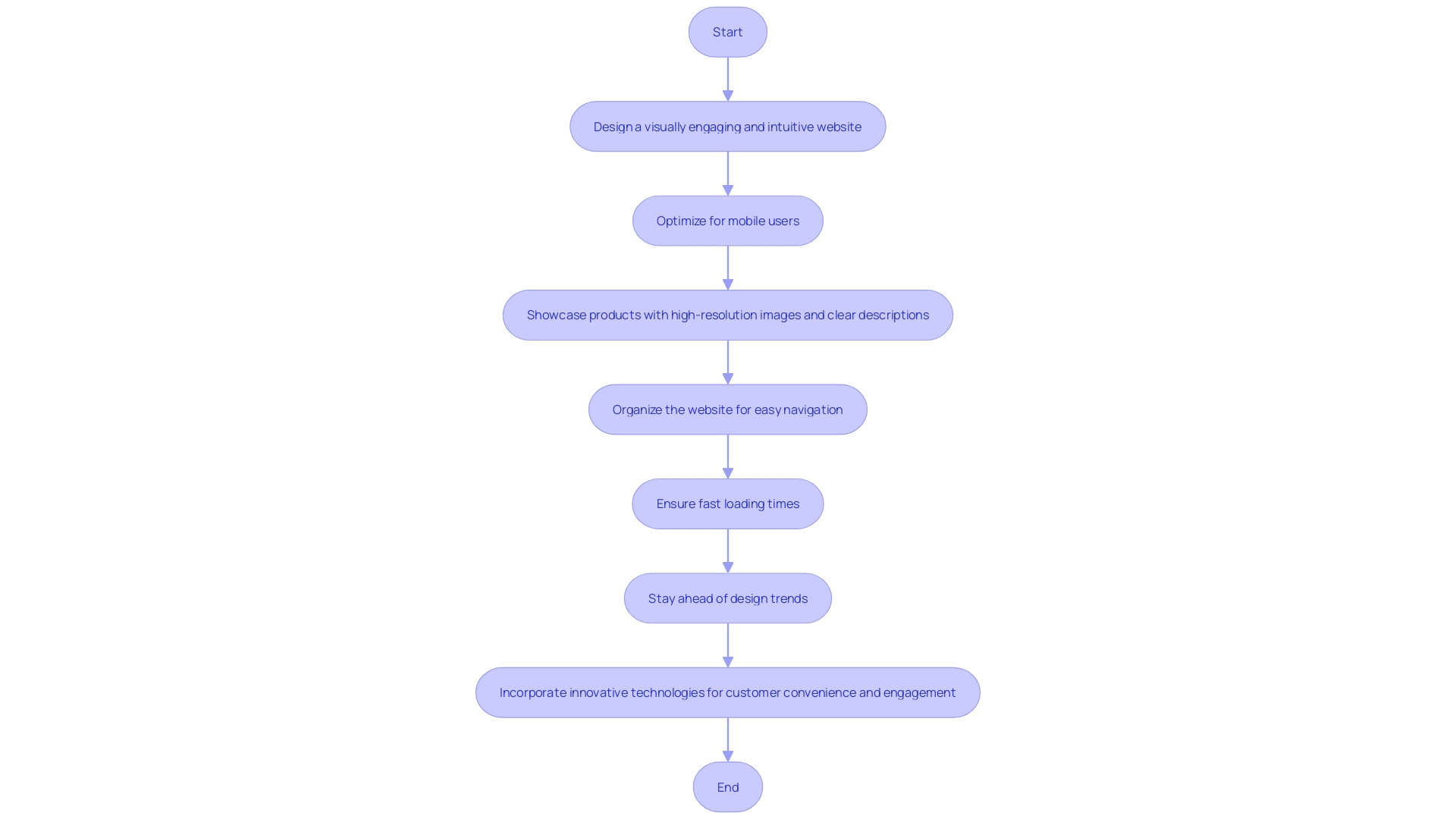
Customize Your Site and Build Out Web Pages
To enhance the overall structure of your retail online presence, it's crucial to infuse it with the distinctive identity of your brand, similar to crafting a personal narrative as demonstrated by Alexandra Murgu's Armur project. Armur demonstrates how a space can echo one's creative ethos and business vision through design coherence and functional patterns across various web pages.
Your site should encapsulate your brand's essence by seamlessly integrating your logo, color palette, and distinguishing design elements. This not only enhances the aesthetic appeal but also ensures a consistent and enjoyable user experience, much like the intuitive navigation observed in the novel checkout-free Dublin Town To Go store.
Focus on constructing core web pages - the homepage, product listings, an 'About Us' section, and a contact interface. Each of these pages must be fine-tuned for search engine optimization (SEO), leveraging the right keywords and meta tags to enhance visibility, as was meticulously achieved for Armur through thorough competitor traffic analysis and content strategies.
Embedding your site with the right features and functionalities that align with your business goals is pivotal. Research indicates that a staggering 43% of small businesses recognize the importance of website performance and are investing accordingly. With the average shopper starting their journey on the internet, the digital experience you provide is crucial. It's not just about listing products; it's about creating content that answers potential questions and stands out in the vast sea of online retail.
The success of your online presence depends not only on its visual appeal but also on its ability to engage and convert visitors. Considering studies indicate that initial judgments are made in a mere 50 milliseconds, the design of your online platform plays a vital part in retaining visitors and potentially converting them into devoted patrons.
In summary, your website should not only reflect your brand's story and ethos but also be optimized for functionality, SEO, and user experience, ensuring it serves as a compelling digital front for your business.
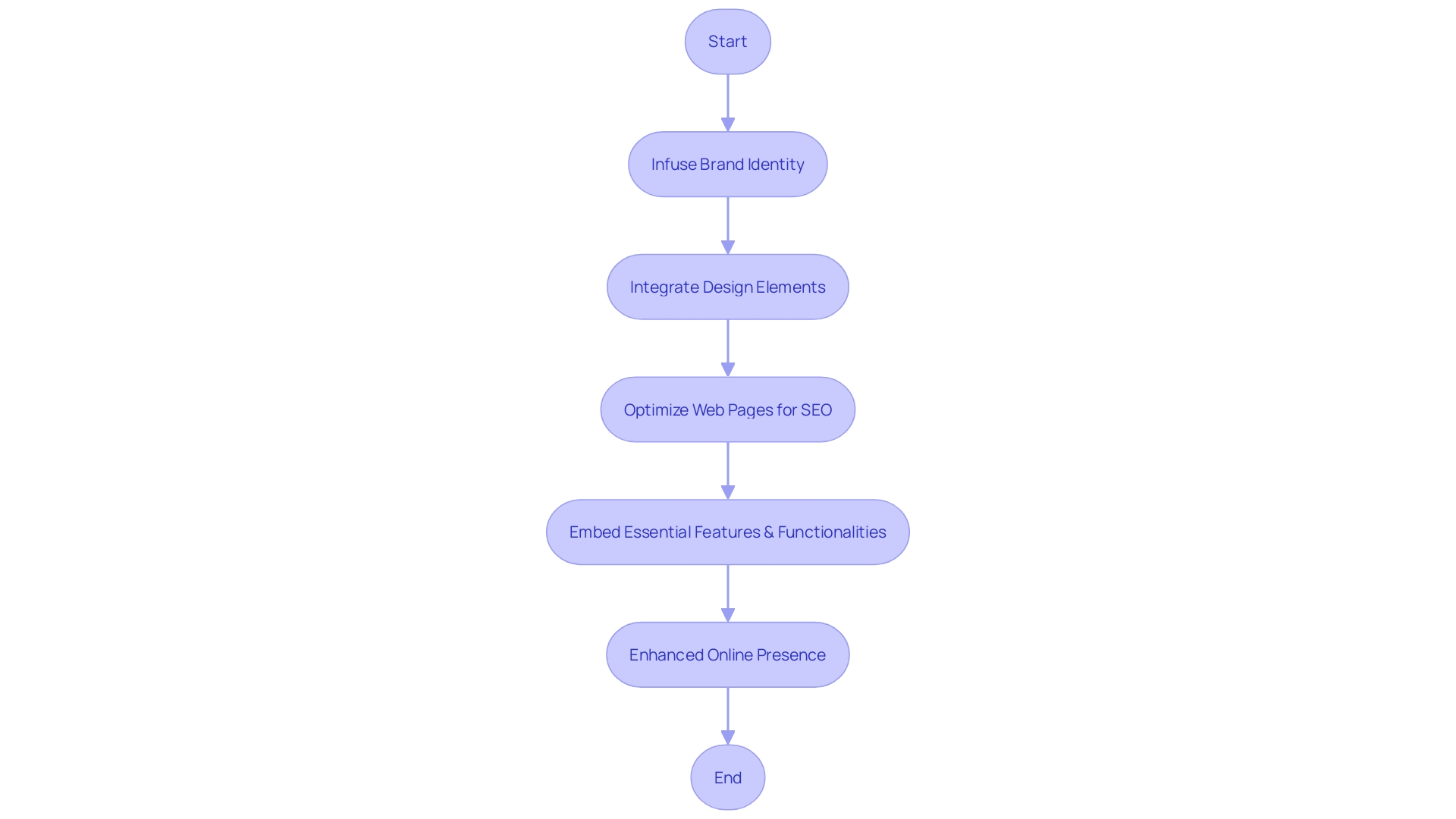
Create Product Listings
Crafting product listings that resonate with your audience and spur sales involves more than just describing your items; it requires strategic writing and presentation. Begin by deeply understanding your target buyer's preferences and pain points, possibly through surveys and interviews. This knowledge empowers you to curate product descriptions that captivate and persuade.
To maintain readability and engagement, use short sentences and paragraphs, coupled with bullet points for easy scanning. Aim for product titles that are informative yet concise, ideally between 75 to 100 characters to avoid being truncated in search results. SEO should underpin your copywriting, so research and integrate relevant keywords to improve visibility without compromising content quality.
Keep in mind, clients may be skeptical of biased information, which is where consumer reviews become invaluable. Displaying positive reviews can significantly enhance trust and encourage purchase decisions. Additionally, ensure your product images and videos depict your offerings attractively, as they are often the first element to catch a shopper's eye.
Modern retail trends, including the rise of checkout-free stores and the balance of in-store and online shopping, underscore the necessity of a solid online presence. With retail evolving amidst economic pressures, having an engaging and user-friendly e-commerce site is more crucial than ever.
To engage with your target audience, utilize storytelling, focusing on who the product is for, what it does, and why it matters. This approach can forge an emotional bond with potential buyers. Moreover, offer a pragmatic pitch that succinctly emphasizes how your product will enhance the buyer's life.
Remember, it's essential to list not just features but also benefits, providing a complete picture of what the product offers. Customer service information should also be readily available. By implementing these strategies, you position your product listings to not only attract but also convert browsers into buyers, tapping into the vast potential of the e-commerce landscape valued at over $5.7 trillion globally.
Set Up Payment Gateway and Inventory Tools
Embracing a robust payment gateway is more than just a convenience; it's an essential factor in driving sales on your retail website. A seamless checkout process provided by Stripe, as chosen by numerous companies for its comprehensive approach, supports a variety of payment methods while safeguarding transactions with advanced fraud protection. The integration of Stripe not only simplifies the payment process but also extends its capabilities to manage refunds, reconciliation, and fraud analysis, all with the customer's experience at the forefront.
Moreover, the fusion of inventory management tools with your payment system can significantly enhance order fulfillment efficiency by maintaining accurate stock levels. This is particularly relevant in light of the rapid expansion of e-commerce, which has seen a surge in digital payment transactions with a projected total value of $14.78 trillion by 2027. Implementing such integrated systems positions your business to effectively manage the increasing volume of online transactions.
As Volodymyr Soska, a Software Development Engineer at SPD Technology, points out, the certification process for integrating third-party payment processors can be lengthy. However, the investment in time is worthwhile to ensure a secure, user-friendly payment experience that aligns with client expectations. This approach is further validated by the emergence of innovative retail solutions like the checkout-free stores powered by Zippin technology, demonstrating the evolving landscape of retail and the importance of responsive payment systems.
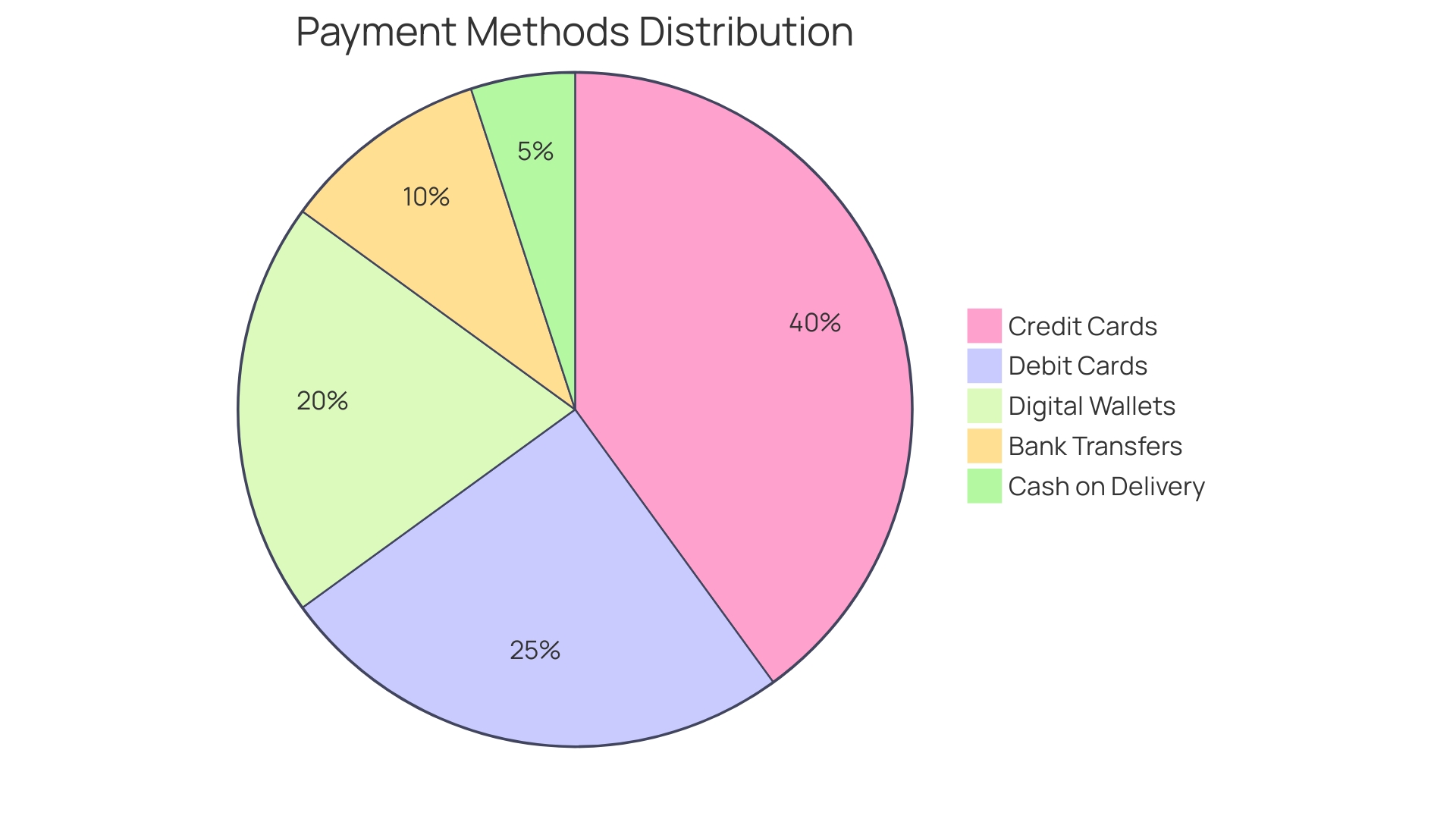
Test and Launch Your E-commerce Site
To fortify your retail website's potential for success, meticulous testing across a spectrum of devices and browsers is indispensable. This guarantees responsiveness and smooth operation, vital for satisfaction of clients. Addressing technical pitfalls such as sluggish load times or dysfunctional links preemptively avoids client frustration and lost sales. The case of Elkjop, a leading electronics retailer in the Nordics, exemplifies the importance of optimizing the online experience to mirror the trust and expertise found in-store. Their approach to centering the customer in their omnichannel strategy underscores the value of a cohesive online-offline presence. In contrast, a cautionary tale arises from a small business that had its online presence, constructed on WordPress and facilitated by a local service provider, negatively impacted by subpar server performance and downtime during periods of high traffic, underscoring the imperative for dependable hosting and resilient infrastructure. With 43% of small businesses investing in site performance, acknowledging the role of a site as an online environment that facilitates interaction and solution provision is more pertinent than ever. With the internet expanding with more than 1.09 billion online platforms, guaranteeing that your online retail store stands out by providing an encounter that competes with in-store shopping becomes a crucial distinguishing factor.
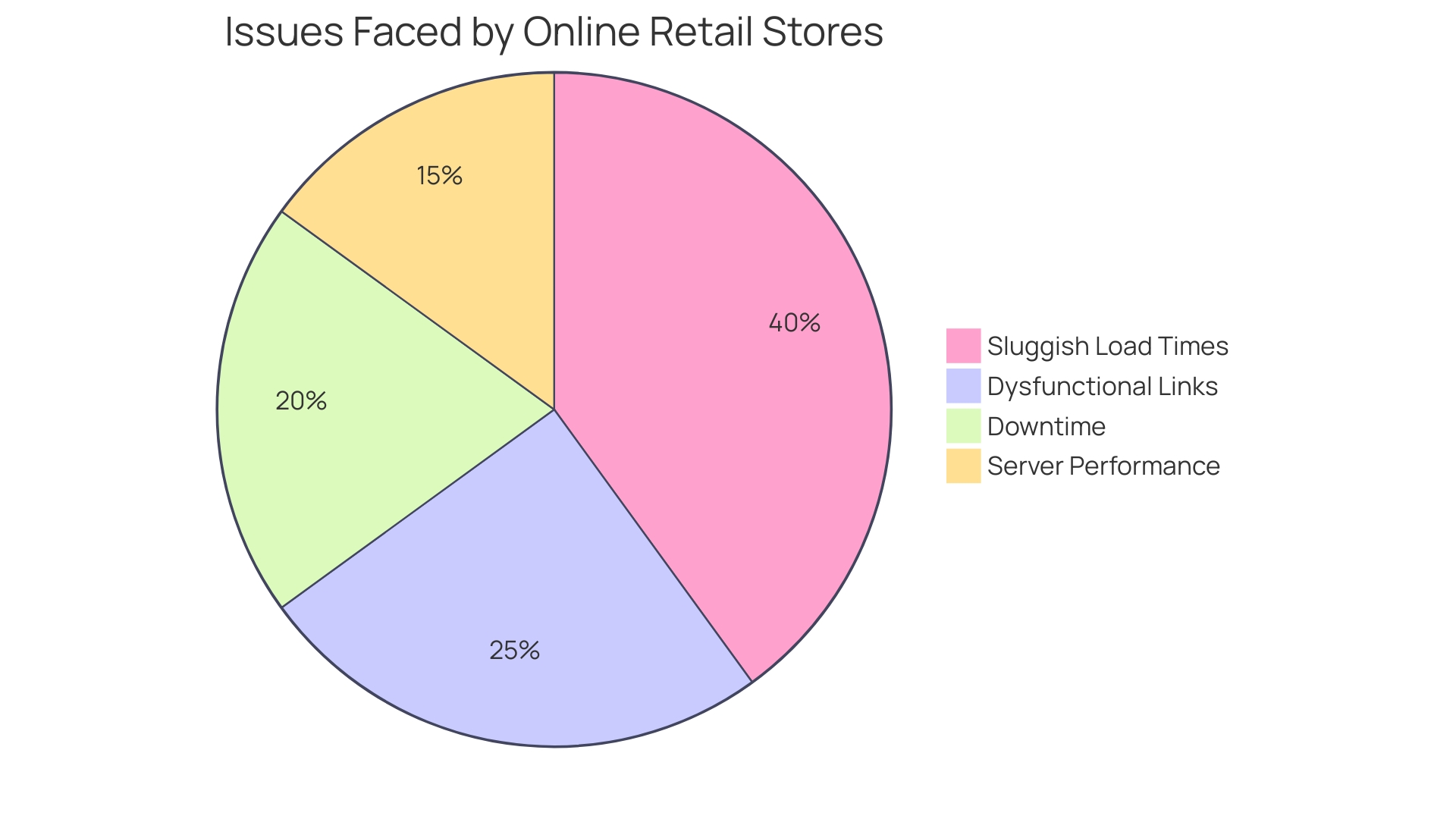
Market Your Products and Brand
Once your retail website is operational, the emphasis moves to making your products and brand stand out in the online sphere. An effective digital marketing strategy is crucial, encompassing SEO, social media, email outreach, and content creation. To attract specific individuals to your site, utilize both paid ads and organic search strategies. Engage audiences on social platforms and via email communications, and commit to ongoing analysis and refinement of your marketing efforts to enhance presence and drive sales.
The virtual scenery presents a variety of chances to establish a smooth ecosystem between the offline and internet domains. Understanding that customers no longer differentiate between channels but rather seek convenience and efficiency in their shopping journey is key. MediaMarkt, Europe's premier electronics retailer, exemplifies the fusion of a strong internet presence with a network of physical stores, demonstrating that in-store experiences and virtual research are deeply interconnected. Their approach in synchronizing digital strategies to enhance offline sales reflects a keen awareness of evolving consumer behaviors, which now involve extensive brand consideration and decision-making time.
Incorporating technology like cookies to gather data on browsing behaviors allows for personalized and enhanced shopping experiences, while respecting user consent and preferences. This strategic use of data is instrumental in optimizing features and functions on your e-commerce platform.
It's also essential to recognize key retail trends such as efficiency, retail media, technology, health, and sustainability, which are influencing the grocery sector and beyond. Retailers must adapt to these trends, as they present both opportunities and challenges. For instance, sustainability is no longer optional but a standard expectation among consumers, with many seeking eco-friendly products and transparent business practices. The resurgence of physical stores also highlights the importance of in-store experiences, which can be revitalized through digital innovation.
To improve your marketplace position, take into account pricing that is competitive, increased traffic, and enhanced service for your clients. Acknowledge the unique marketing strategies required for various online platforms, such as eBay and Amazon, which vary in business models and engagement with clients. Giving top priority to website design that is user-friendly is crucial—because ultimately, the finest products hold no value if potential clients perceive your site as unwelcoming or challenging to navigate. Moreover, displaying high-quality product images that load rapidly is essential to capturing client interest and driving sales.
In essence, a marketing strategy must be clearly defined and implemented across various online platforms to effectively reach the target audience. A comprehensive approach, supported by a clear understanding of market share and customer personas, is essential for success. While nearly half of businesses lack a planned digital marketing strategy, it's encouraging that more than half take a strategic approach. Utilizing SOPs can significantly boost marketing effectiveness and efficiency, as demonstrated by the RACE Growth System. Remember that the ultimate goal is an integrated strategy that resonates with today's consumers, who value both sustainable choices and immersive shopping experiences.
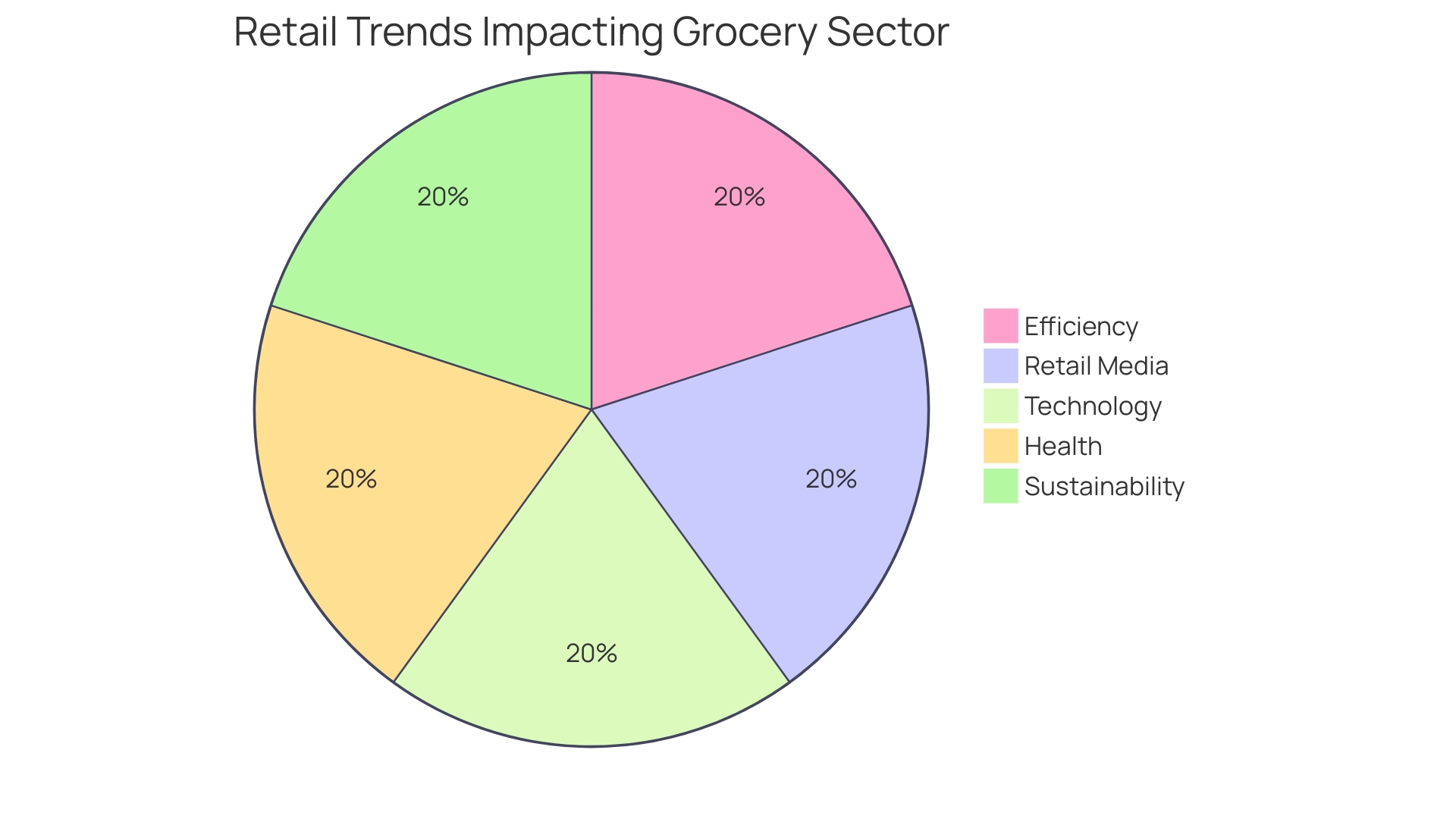
Conclusion
In conclusion, building a successful retail website requires a clear strategy and a customer-centric approach. It starts with defining your e-commerce business model and crafting a compelling value proposition that resonates with your target audience. Choosing the right domain name is crucial, considering simplicity and incorporating relevant keywords for SEO.
Selecting the ideal e-commerce platform involves evaluating features, customization options, and the ability to integrate and analyze customer data.
Setting up web hosting is essential for website performance, reliability, and security. Designing an engaging website that is optimized for mobile users and follows modern design trends is crucial. Customizing your site with your brand's unique identity and building out core web pages that are fine-tuned for SEO are important for visibility and user experience.
Crafting product listings that resonate with your audience involves strategic writing, presentation, and the inclusion of customer reviews. Setting up a robust payment gateway and integrating inventory management tools streamline the checkout process and enhance order fulfillment efficiency.
Testing your website thoroughly across devices and browsers ensures responsiveness and seamless operation. Implementing an effective digital marketing strategy, including SEO, social media, email outreach, and content creation, is crucial for driving traffic and sales. Embracing technology like cookies for personalized experiences and staying updated on retail trends are also important.
In summary, building a successful retail website requires careful planning, attention to detail, and a focus on providing an optimized user experience. By following these expert recommendations and adopting a customer-centric approach, you can create a retail website that stands out in the competitive online marketplace and drives sales.





